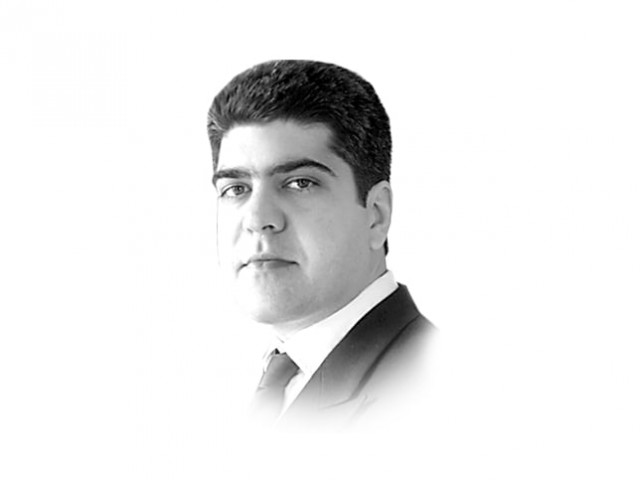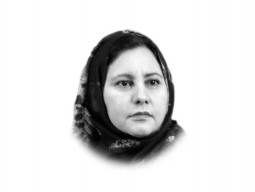
Just over a decade ago, then Punjab chief minister Shahbaz Sharif undertook two ambitious road infrastructure projects along the Canal Road in Lahore: the Jail Road and Ferozepur Road underpasses. They were built because, we were told, they would solve the traffic problems of the city. Since then, under Pervaiz Elahi, many more underpasses and overpasses have been built along, over and under the Canal. They were all built, we were told, to solve the traffic problems of the city.
In the past 15 years, the following has been the cost of the infrastructure added along the Canal: Jail Road underpass (1994) Rs55 million, Ferozepur Road underpass (1996) Rs174 million, Punjab University New Campus underpass (1998) Rs330 million, Mall Road underpass (1993) Rs243 million, FC College underpass (2004) Rs288 million, Doctor’s Hospital underpass (2004) Rs196 million, Jinnah Hospital underpass (2004) Rs. 190 million, Punjab University underpass near Hostel No 2 (2005) Rs98.6 million, Punjab University underpass near Hostel No 14 (2005) Rs98.6 million, Gulzar underpass (2007) Rs. 489 million, Shalimar Interchange (2010) Rs3.6 billion. This comes to a total of Rs6.3 billion spent on road infrastructure along the Canal Road in Lahore alone. The list excludes the billions spent on the Mughalpura underpass and Thokar Niaz Beg overpass, as I do not have their details. Nor does this figure include money spent on other road projects in Lahore.
Have these billions of rupees spent on just one road in Lahore resulted in an improvement in the traffic in the city? Has it given boost to the economy? Has it improved the environment? Can we look at these constructions and say the city of Lahore is safer, more beautiful, sustainable, liveable? Take a look at any city street and see for yourself. Be stuck in slow-moving traffic (nothing out of the ordinary in a large city, by the way) along the Canal and ask yourself if the money spent could have been put somewhere else. Think, for a moment, you did not own a car, like the vast majority of Lahoris.
The Punjab government is in the middle of a traffic survey being conducted in collaboration with the Japan International Cooperation Agency. The preliminary findings of the study, which is comprehensive, indicates that there are no more than 400,000 cars and a little of 800,000 motorcycles in the city. It reveals that nearly 65 per cent of the population of the city lives in little over a crammed 10 per cent of its footprint (the majority space is taken up by elite residential housing schemes which are, as a result of the sprawl they thrive on, automobile dependent). It reveals that nearly 40 per cent of Lahoris do not have access to automobiles and walk to work.
It also reveals, and this needs to be explained, that Lahore has a comparatively low number of trips generated for a city of its size and population. Usually, in large cities which are well-planned and well-run, there is a multiplicity of transport options available to citizens. They can walk, they can cycle, they can take a taxi or a rickshaw, they can take the bus or ride on a rapid mass transit system. Even escalators and elevators that move thousands of people an hour are a form of transport available. In Lahore, there is no multiplicity of transport options. Either you have access to a car or motorcycle or you brave the bus or take a rickshaw. Because so few people have access to cars, because so few people can afford to commute on rickshaws every single day, because public transport is non-existent, what the lack of transport options means is that women, children, senior citizens and the handicapped are effectively trapped at home. They cannot travel unless they have planned well in advance. Thus the low trip-generation count and, much more worrying, the violation of citizens’ fundamental right to mobility.
What Lahore needs is a great public transport system. What Lahore needs is to give its residents the ability to move about free and unhindered. The power of mobility in spurning the economy is well-known. What Lahore needs is clean air and safe streets. What Lahore needs is a secure source of drinking water; hospitals to treat its sick and schools to educate its children; public libraries so that children too poor to afford a meal at a restaurant or to be allowed into a shopping mall or private club can spend time in what my friend Enrique Penalosa calls “Temples of Knowledge”.
It is nearly universally recognised that the traffic congestion problems cannot be solved by building new roads. It is universally recognised that traffic congestion must be managed by a combination of investment in public transport (including taxi services), the rationalisation of parking fees, congestion charging, soft traffic management, demand management, better use of existing facilities, avoiding VIP traffic congestion and enforcement and implementation of traffic regulations. Has any of this ever been done?
None of these things have happened because the powers that be spend billions of rupees a year on infrastructure development that benefits a minority automobile elite. This money also benefits a vast network of stakeholders involved in the design and execution of these works (has anyone wondered why Nespak can only build ramp overpasses and not column overpasses, which are cheaper and take less space?).
The recent and hastily put together and poorly thought out plan by the Punjab government to allocate Rs1.2 billion for this financial year, and a total of Rs2.852 billion, for the construction of an overpass at Kalma Chowk is just another example of a long trend of misallocation of resources. The powers that be, blind by their vision of what will attract foreign investment and perhaps win them an upcoming election, look only towards adding more and more expensive infrastructure. The cost of this single overpass is three per cent of the development budget for the entire province. The engineering and execution contracts have been awarded without open bidding and in violation of Procurement Rules. The allocation has been made as if Pakistan did not suffer from a catastrophic flood just last year. It has been made as if there is no reconstruction or rehabilitation work that urgently needs to be done in other parts of Punjab. It has been done, as we have been told before, to solve the traffic problems of the city. When will we realise we’ve heard this joke before?
Published in The Express Tribune, March 21st, 2011.













COMMENTS
Comments are moderated and generally will be posted if they are on-topic and not abusive.
For more information, please see our Comments FAQ